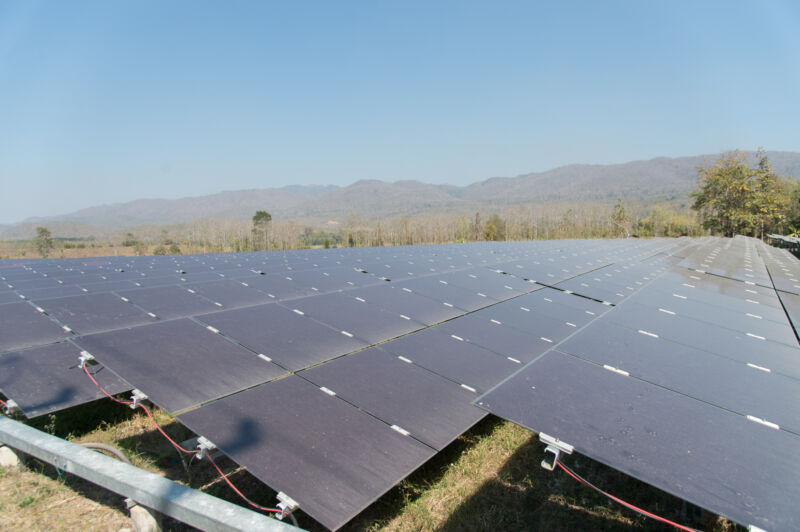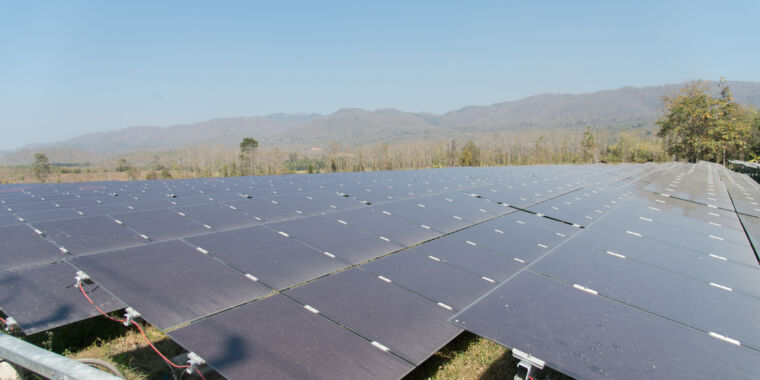Table of Contents

One of the worst features of blockchain technologies like cryptocurrency and NFTs is their horrific energy use. When we should be wringing every bit of efficiency out of our electricity use, most blockchains require computers to perform pointless calculations repeatedly.
The obvious solution is to base blockchains on useful calculations—something we might need to do anyway. Unfortunately, the math involved in a blockchain has to have a very specific property: The solution must be difficult to calculate but easy to verify. Nevertheless, a number of useful calculations have been identified as possible replacements for the ones currently being used in many systems.
A paper released this week adds another option to this list. Optimization problems are notoriously expensive in terms of computations, but the quality of a solution is relatively easy to evaluate. And in this case, the systems being optimized are small energy grids, meaning that this approach could partly offset some of a blockchain’s horrific energy usage.
Optimization
The classic example of the computational problem that makes sense in blockchain is factoring a large number that’s the product of two prime numbers. It’s computationally difficult to identify the two primes, but once you have them, trivially easy to confirm the outcome of multiplying them. And, from the perspective of wasting energy, doing the non-trivial calculation is useless unless you happen to know of a situation where those numbers matter.
Optimization problems are similar. Figuring out an optimal solution, such as the shortest route that includes several cities, involves sampling all possible routes. And the number of possible routes rises dramatically with each additional city put on the itinerary. For many optimization problems, however, figuring out whether a proposed route is efficient is a much simpler calculation, which means that any solutions are easy to verify.
Most importantly, optimization problems show up in the real world all the time, from how to squeeze the most boxes into a shipping container to how to assign tools and technicians to ensure maintenance work gets done efficiently. That difference is behind a research team’s efforts to shift blockchains from a proof-of-work (PoW) like factoring a large number to a proof-of-solution (PoSo), where blockchain transactions result in a useful calculation. (If you wonder why PoSo ended up with that second ‘o,’ drop the letter and think about it for a moment.)
When choosing an optimization problem for their PoSo blockchain, the researchers opted for irony, focusing on the energy supply that other blockchains eat through. They note several problems in energy distribution where optimization is needed: matching supply with demand, figuring out the most economic combination of generating sources, and so on.
They also argue that blockchain might make more sense as the energy market starts to decentralize a bit, with growing numbers of items like microgrids, rooftop solar, intermittent power sources, and smaller on-grid batteries all decentralizing the sources of on-grid power. The complexity of managing all that as a single, centralized grid is growing accordingly, so the researchers suggest that small sub-grids could self-manage through PoSo-based optimizations.
No more Enrons?
To test their system, they turn to two small energy systems. One is the University of Manchester, which has some combined heat and power facilities, electrical storage, and heat storage, along with some boilers. Figuring out which of these to activate under different circumstances is an economic optimization problem but computationally tractable enough that a solution could be calculated in as little as 220 seconds. Verifying that solution takes a grand total of one second.
They performed a similar analysis for a system that provides a combination of electricity, heating, and cooling for a district in the city of Suzhou, China. Again, the system managed to quickly generate optimal solutions for the distribution of resources and was competitive with a centralized management system.
The problem is that the system still requires multiple computers to perform calculations and verification, so it will require more energy than simply running the optimization on a single system. But the researchers argue that the PoSo blockchain solution offers a significant advantage: It’s harder to game.
Imagine a situation where the operator of the central management system wants to favor specific generating sources even (or especially) if they’re more expensive than other options. There’s essentially nothing that could stop it. In contrast, with a distributed system, all individual nodes will compete to find the best solution. Even if one or two nodes are compromised, others should produce optimized systems, and the verification process will ensure that one of these gets used.
Overall, this seems like a bit of a stretch, given it’s not clear how often there’s manipulation of energy prices of the sort this system would protect against. Still, it’s nice to see some concrete ideas on using blockchain in situations where the energy demands aren’t horrific, and there are some valuable practical outcomes.
Nature Energy, 2022. DOI: 10.1038/s41560-022-01027-4 (About DOIs).






More Stories
Will Crypto-Based E-Commerce Destroy the Dinosaur-Style Banking Industry?
Getting Started With Crypto
Everything You Need to Know About Davenport Laroche